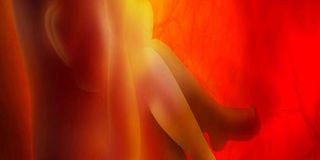Guidelines can stop unnecessary abortion deaths

Unsafe abortions could be one of the main causes of maternal mortality in Kenya. PHOTO | FILE | NATION MEDIA GROUP
What you need to know:
Government statistics show seven women die every day, 2,555 yearly, from unsafe abortion.
But despite being unacceptable human rights violations targeting only women and girls, the deaths are preventable.
Part of achieving the ‘Big Four Agenda’ requires that we take measures to stop the grim statistic of fatalities from unsafe abortions.
In April 2012, the Kenya National Commission on Human Rights released a report on the status of sexual and reproductive health and rights of women and girls in Kenya. This was the result of a public inquiry following a complaint by the Federation of Women Lawyers and the Centre for Reproductive Rights that, despite having in place a progressive legal and policy framework, women and girls still face sexual and reproductive health violations.
ARBITRARILY DRAWN
The KNCHR cited several barriers that impede access to quality sexual and reproductive health services — including unavailability of abortion and post-abortion services, lack of accurate and comprehensive information and high cost of services.
Subsequently, women and girls are forced to procure unsafe abortions even when they qualify for professional services under Article 26 (4) of the Constitution.
Government statistics show seven women die every day, 2,555 yearly, from unsafe abortion. But despite being unacceptable human rights violations targeting only women and girls, the deaths are preventable.
A key recommendation made by the commission was the need for the government to develop standards and guidelines providing guidance on implementation of the constitutional provision.
These were to ensure access to safe legal abortion, which is key to ending preventable maternal death.
While the Ministry of Health actualised the recommendation in September 2012, when it published the “Standards and Guidelines for Reducing Morbidity and Mortality from Unsafe Abortion in Kenya”, the gains were short-lived.
The guidelines were arbitrarily withdrawn in December 2013, followed by a memo in February 2014 that banned the training of health workers on safe abortion care or the use of the drug Medabon for medical abortion.
LANDMARK DECISION
In a landmark decision delivered on June 12, this year, the High Court ruled that the ministry’s 2014 withdrawal of the guidelines and its subsequent ban on abortion-related training were arbitrary and unlawful.
The guidelines are a vital policy document that guides healthcare providers on when and how to provide safe and legal abortion and post-abortion services. It also provides a framework on how to prevent unintended pregnancies through access to accurate sexual and reproductive health information.
It is, therefore, paramount to assess the implications of the ruling to the recommendations by the KNHCR in its 2012 report.
At the heart of the court decision is the story of an adolescent, named “JMM”, who was defiled by an older man. Due to lack of accurate information, exacerbated by stigma, the 14-year-old girl sought an unsafe abortion that led to lifelong complications, leading to her death in June last year.
JMM is the face of many adolescent girls who are victims of sexual violence and who, due to lack of information, end up in the hands of quacks procuring unsafe abortions.
In the 2012 inquiry, KNHCR found that adolescents are often excluded from service provision and lack relevant and accurate information on sex, sexuality and reproductive health matters.
It recommended that the government ensure youth-friendly non-discriminatory sexual and reproductive health services are widely available and accessible to all adolescents and implements laws and policies to protect them from sexual violence.
ENJOY RIGHTS
The court’s declaration that the right to health, life, non- discrimination, consumer rights, information and right to scientific progress of women and girls of reproductive age were infringed upon in the case of JMM and are threatened by the actions of the ministry’s withdrawal of the guidelines.
Apart from breathing life into the recommendations, the decision reaffirms the centrality of fundamental rights for all as provided for under the Bill of Rights.
However, the test lies in the implementation of the momentous court decision. For women and girls to fully enjoy their rights set out in the Constitution and the court ruling, the ministry must reinstate the guidelines and resume the training of all health professionals — including nurses, clinical officers, midwives and doctors — on the provisions of safe and legal abortion.
It must also ensure women and girls have access to accurate and comprehensive sexual and reproductive health information. This it can do by disseminating information on safe and legal abortion at all levels.
Part of achieving the ‘Big Four Agenda’ requires that we take measures to stop the grim statistic of fatalities from unsafe abortions.
Mr Morara is the vice-chairperson, Kenya National Commission on Human Rights (KNCHR); [email protected].




